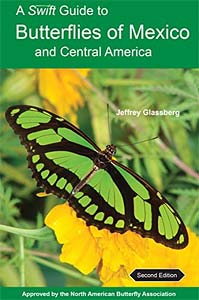How to prepare for your birding trip to Guatemala
Guatemala harbors more than 770 bird species. To get acquainted a bit with the avifauna before a trip to an area you never birded before, it is helpful to look through regional bird field guides. Several regional field guides are available for Guatemala.
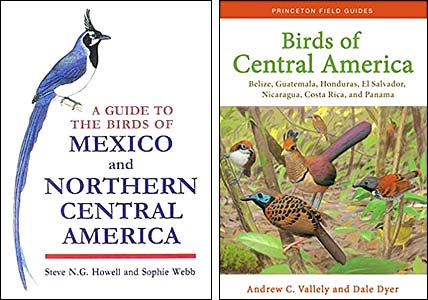
Howell & Webb (1995): A guide to the birds of Mexico and northern Central America. Oxford University Press, New York.
GET YOUR COPY HERE.
Vallely & Dyer (2018) Birds of Central America: Belize, Guatemala, Honduras, El Salvador, Nicaragua, Costa Rica, and Panama. Princeton University Press, Princeton, NJ.
GET YOUR COPY HERE
The recently published Princeton Field Guide by Andrew C. Vallely and Dale Dyer covers the avifauna of the southern part of the land bridge between North and South America, including all Central American countries: Belize, Guatemala, Honduras, El Salvador, Nicaragua, Costa Rica, and Panama. The book treats nearly 1200 resident and migratory species, presented in modern style covering 3-6 species with one or several illustrations on a plate, and maps and text accounts on the opposite page. Lifelike illustrations are accompanied by notes on identification, distribution, habitat and residency status. This book is also available as practical electronic versionen for using on your smartphone/tablet.
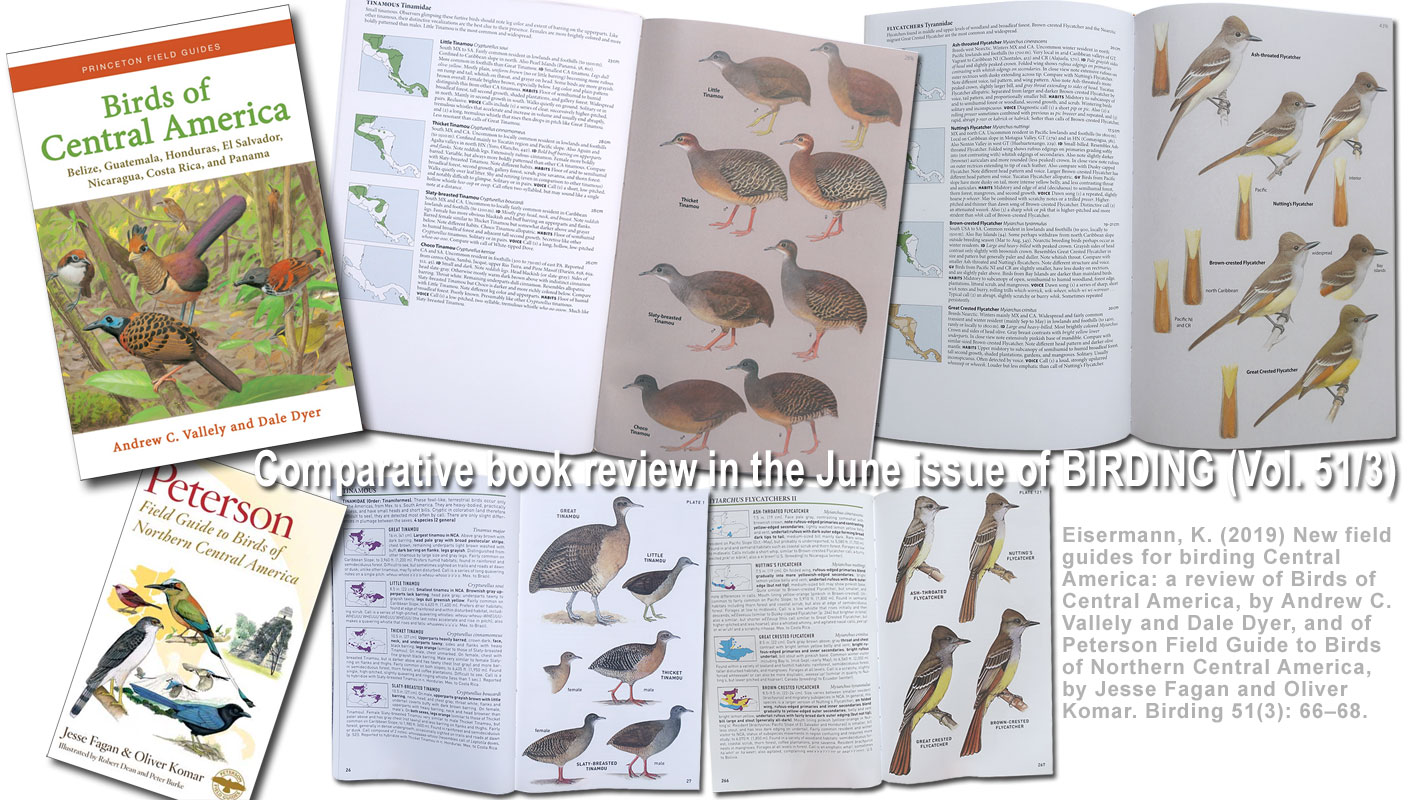
A more extensive version of the review is online at the American Birding Association Blog
The guide by Steve N. G. Howell and Sophie Webb also treats more than 1000 species, covering the northern part of the land bridge with Mexico, Guatemala, Belize, Honduras, El Salvador and western Nicaragua. This book was published in 1995 and has been designed in the style of its time, with plates in the center of the book, separated from the text pages. This guide includes extensive information on identification (including similar species), spatial and temporal distribution (including maps), habitats, and brief notes on behavior. An average 1/2 page is dedicated to the text account for each species. Most paintings illustrate the species in colors and postures seen in nature. A drawback of this guide book is that North American bird species are not illustrated. This means that migratory birds, such as the large group of wood warblers, ducks, and shorebirds breeding in North America, and resident birds also widely distributed in North America, such as certain herons or hawks are not pictured in the book; text and maps of these species are presented in the same standard as used for Mexican and north Central American birds. The lack of illustrations of North America birds requires a second guide book to be able to identify these birds. Our preferred guide books for North American Birds are the Sibley Guide to Birds and the National Geographic Field Guide to Birds of North America.
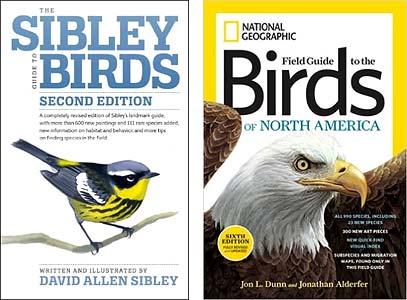
Sibley Guide to Birds, 2nd edition: GET YOUR COPY HERE
National Geographic Birds of North America, 7th edn.: GET YOUR COPY HERE
Howell & Webb and the Sibley or the National Geographic guide together weigh about 5 lbs, a weight most birder are not willing to carry around in the field in the hot tropics. There are two compact options of field guide books including the birds of Guatemala: the recently published Fagan & Komar (2016) Peterson Field Guide to the Birds of Northern Central America, and the van Berlo (2006) Birds of Mexico and Central America (Princeton Illustrated Checklists). Between the two, we recommend the Peterson guide, but both books have their drawbacks through inaccurate information on distribution and in some cases erroneous illustrations, which make it difficult for the inexperienced observer to identify birds in the field. Migratory birds are illustrated in both books.
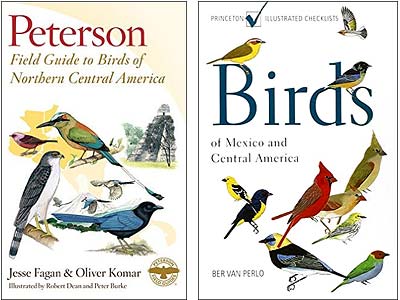
For mammals, we recommend Reid, F. (2009) A Field Guide to the Mammals of Central America and Southeast Mexico. 2nd edition. Oxford University Press, New York ...
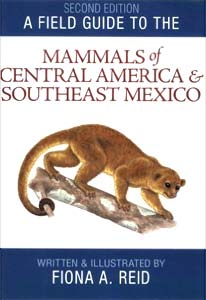
... and for reptiles and amphibians we recommend the two volumes by G. Köhler:
Köhler, G. (2008) Reptiles of Central America. 2nd edition. Herpeton, Offenbach, Germany.
Köhler, G. (2011) Amphibians of Central America. Herpeton, Offenbach, Germany.
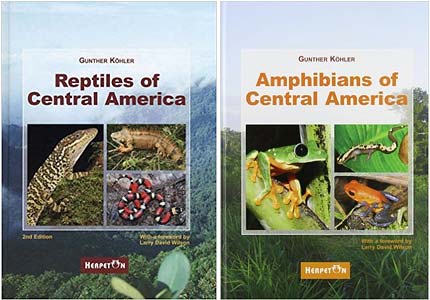
Jeffrey Glassberg's (2018) A swift guide to the butterflies of Mexico and Central America. 2nd edition. Princeton University Press, Princeton, NJ. is a great field companion to identify the butterflies of the region. Also available as electronic version for the use on your smartphone/tablet.
